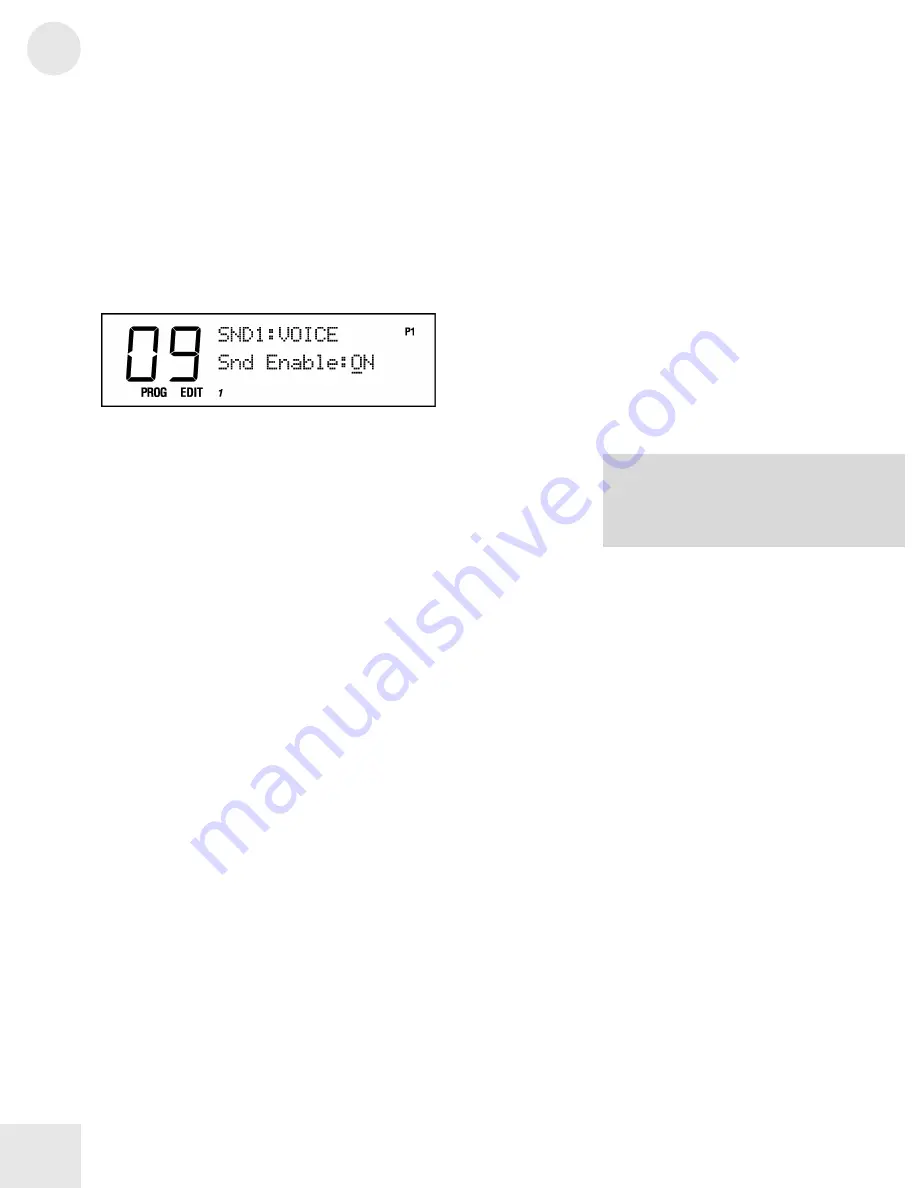
7
Editing Programs
36
The Voice Function [40 VOICE]
Hit the [40] button to choose the sample that forms the basis of your
Sound. Use the [PAGE] buttons to select parameters within this
function to edit.
Turning Sounds On and Off
Button:
[EDIT] [40 VOICE]
Page:
1
Parameter:
Snd Enable (ON or OFF)
This enables or disables the selected sound. When a Sound is disabled,
“snd” will appear in lowercase in the display. When enabled, “SND” will
appear uppercase.
To avoid using up polyphony unnecessarily, turn off any Sounds that
you’re not using. Turning Sounds off is also a convenient way to isolate a
particular sound you are editing.
Selecting Keyboard or Drum Mode
Button:
[EDIT] [40 VOICE]
Page:
2
Parameter:
Snd Type (KYBD or DRUM)
This determines whether the Sound is in Keyboard Mode or Drum
Mode. This chapter describes the Keyboard Mode functions. See the
Drum Mode section of this manual for more information.
Selecting a Sample Category
Button:
[EDIT] [40 VOICE]
Page:
3
Parameter:
Group (see chart)
This selects the sample category (or group) for the Sound (for example,
Pianos, Organs, Guitars, etc.)
Selecting a Sample
Button:
[EDIT] [40 VOICE]
Page
4
Parameter:
Snd (see chart)
This selects the actual sample that will be the basis of the Sound. Here’s
a chart listing the various samples in their respective groups.
TIP: A quick way to turn a Sound on and off
from anywhere within Program Edit Mode is
to hold the corresponding Sound button
[00]–[30] and press [VALUE DOWN] to
disable or [VALUE UP] to enable.
Summary of Contents for QS6.2
Page 1: ...Reference Manual...
Page 2: ...This page intentionally left blank 10 20 30 40 50 60 70 80 90 100...
Page 6: ......
Page 14: ...1 Connections 12 Connection Diagram...
Page 26: ......
Page 64: ......
Page 94: ......
Page 102: ......






























